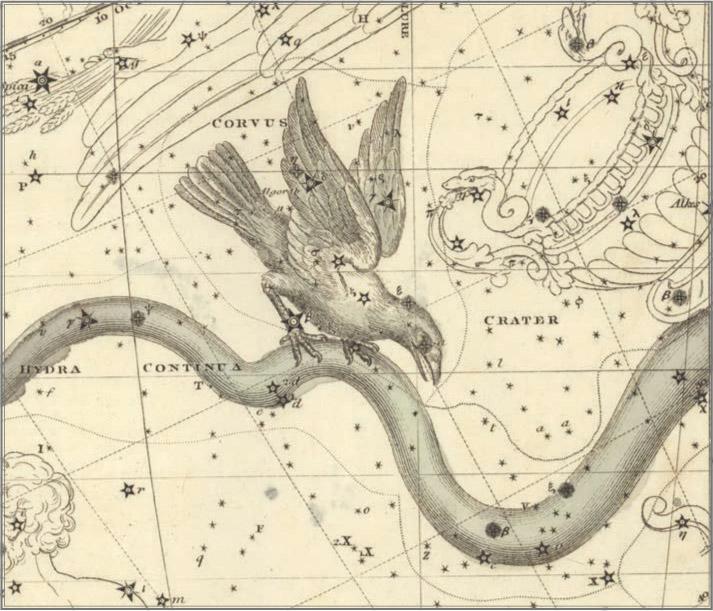
Corvus, the Crow, is one of the classic signs of autumn for evening skywatchers. What the constellation lacks in brightness, it makes up for with a compact and eye-catching geometric shape delineated by four 3rd-magnitude stars. The boxy formation is rendered even more noticeable by its proximity to Virgo's 1st-magnitude Spica, which is roughly 15° northeast of the Crow.
The main pattern of — the imaginary line that connects north to south and passes directly overhead. The constellation's main pattern is formed (working clockwise from upper left) by connecting the stars Algorab, Gienah, Minkar and Kraz. These are also known as Delta (δ), Gamma (γ), Epsilon (ε) and Beta (β) Corvi, respectively. The stars shine at magnitudes 2.9, 2.6, 3.0 and 2.6 (again, clockwise from Algorab). Note that the brightness range spans less than half a magnitude. A very experienced observer can detect a difference of about one-tenth of a magnitude, but a half magnitude spread may go unnoticed by casual stargazers. The four main Corvus stars stand together as a team of near-equals.




